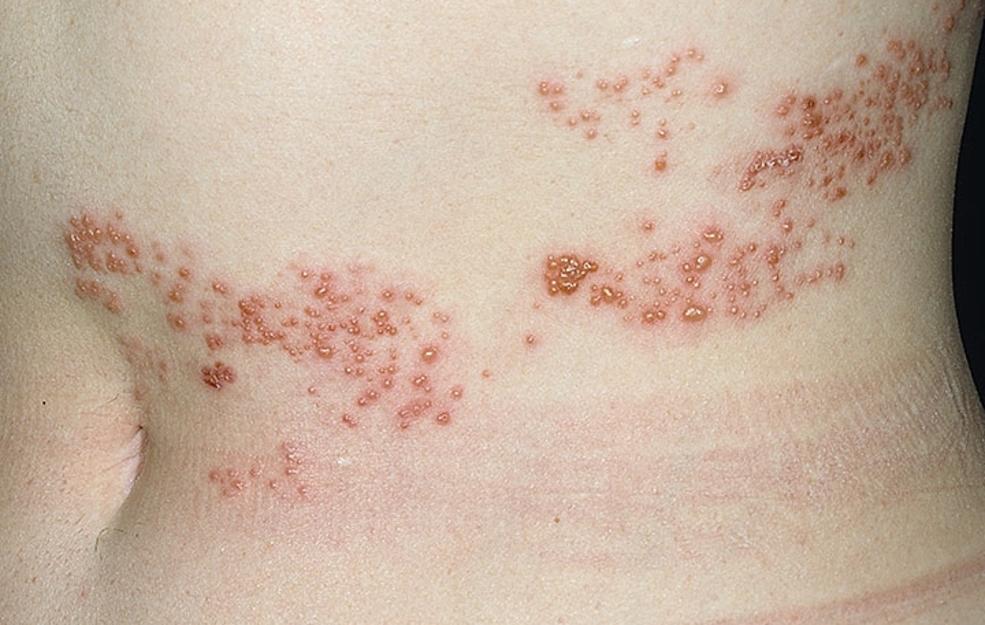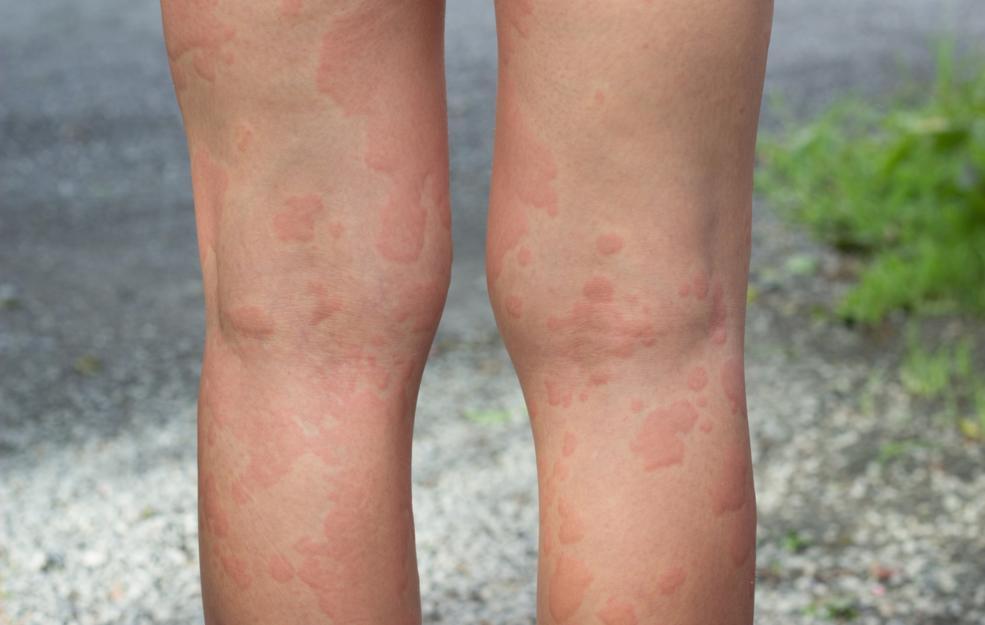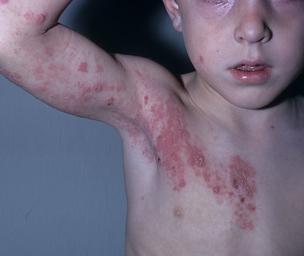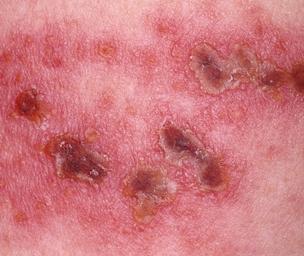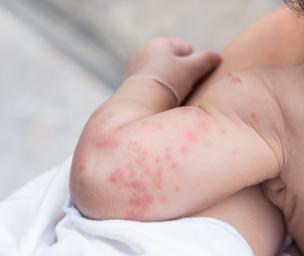A Guide to Recognizing the Early Signs of Shingles

Shingles, also known as herpes zoster, is a disease that occurs due to the reappearance of the varicella-zoster virus, which is the causative agent of chickenpox. Shingles usually starts with a skin rash. These skin rashes occur either in the form of a band or a strip covering a small area on your body. The rashes often last for 2-4 weeks. You might even experience itching and burning sensations.
If you start experiencing similar symptoms, it is time for you to consult your doctor to get an accurate diagnosis and treatment of your current condition.
What causes shingles?
In a person who has a history of being infected with chickenpox, the causative virus varicella-zoster does not get eradicated from the body. Instead, it rests in the nerve tissues and gets reactivated in individuals with weak immune systems. The immune system can become weak due to stress, injury, certain medicines, and other reasons. However, this reactivated virus causes only shingles and not chickenpox. Adults are mostly affected by shingles. Although some of them make a complete recovery, others face the problem of recurrence. There is no other explanation yet as to how or why this happens.
So if you have a history of chickenpox and your body is unduly stressed because of physical and/or emotive factors, and you have started developing rashes with a burning and tingling sensation, it is time you headed over to the emergency room to get tested. Shingles is mostly infectious. The virus causes others to be infected with chickenpox and not shingles.
What are the signs and symptoms of shingles?
The symptoms of shingles occur in stages, so it is better to understand these stages to know how shingles develops. By knowing the stages of this disease, you are able to distinguish if your rash is caused by shingles or another type of skin infection.
It is always a good idea to go in for periodic checkups so that your doctor can help identify and treat the infection in its early stages.
Stage 1
In the initial stages, the disease can be categorized by a sense of body weakness and fever. Certain parts of your body might also start aching. Moreover, tingling and burning sensations may also be experienced in these areas. Later on, rashes start to appear in the same areas. These rashes usually appear along the nerve pathways. Some patients have reported acute pain in these areas. The pain can be excruciating and debilitating, which is why it is advisable to seek medical attention at the earliest.
Stage 2
Now in this stage, blisters start appearing in place of the rashes. These blisters are fluid-filled, similar to the ones you get when you have chickenpox. The blisters are also itchy. However, they do not spread all over the body and tend to occupy only specific areas such as the face, torso, and in some rare cases, the lower body. Through the blisters, the transmission of the virus from person-to-person is possible. However, this transmitted virus can only cause chickenpox and not shingles. That is why the moment you are diagnosed with shingles, you will need to take preventive measures to avoid infecting others. The blisters will not spread all over the body and will remain localized, in the part where the rash had formed.
Stage 3
As mentioned earlier, the blisters are pus-filled, and the pus is released at this stage. The liquid then turns yellow and starts to dry up on your skin. Then they start crusting over or becoming flaky. This process might take up to 1-2 weeks to complete. After this, the pain becomes a little bearable but can persist for a long time. Some people may suffer only for weeks, while others may have to endure the condition for years. This is why you need to consult your doctor right away so that he can provide you with a speedy diagnosis and may have to run a few tests to confirm the same since various skin conditions may cause similar symptoms. It is vital that you seek medical attention at the earliest so that your doctor can prescribe a course of treatment that can help alleviate the pain and discomfort you are experiencing at the moment.
Stage 4
If the infection continues for more than 30 days, then it could have transformed into a postherpetic neuralgia (PHN), where a complete cure of the infection might take years. Around 20 percent of patients who get shingles suffer from PHN. Its symptoms include unbearable pain, sensitivity, and burning sensations. The condition also hinders people from performing many day-to-day activities, making every single day a challenge. For this reason, it is essential that you schedule an appointment with a specialist at the earliest to have an accurate diagnosis as well as treat the infection before it reaches stage 4. Shingles can turn out to be a debilitating condition, one that can cause you to experience excruciating pain and discomfort for years.
Is shingles contagious?
Shingles cannot be transmitted from person-to-person in the initial stages. When the blisters start appearing, they become contagious. If the virus is transmitted to a person who has never had chickenpox, there are chances that he might develop it. There is no way that a person can transmit shingles itself, as the virus causes only chickenpox, and shingles is seen only in patients with a history of chickenpox. Once the blisters dry up and crust over, the patient can no longer spread the virus. Comparatively, shingles has lesser chances of spreading the virus than chickenpox.
It is vital that you seek immediate medical attention and learn how to manage your condition better with medications. And when the blisters start appearing, make sure that no one touches them, since shingles is highly infectious during this stage.
How to prevent the shingles virus (varicella-zoster) from spreading
Shingles prevention depends on whether the patient is immunocompetent (having a normal functioning immune system) or immunocompromised (having an immune system that has been impaired by any form of disease or treatment). Prevention also depends on whether the rashes are localized or disseminated. Localized and immunocompetent cases are the only cases in which the virus does not get transmitted through the air. In all other cases, prevention mechanisms must be followed until the blisters get flaky and start falling off. The basic prevention includes:
- Keeping the rash covered as much as possible because certain types of shingles are airborne. Make sure that you wear adequate clothing so that it can completely cover the blisters. Ensure that no one comes into contact with the blisters as they are highly infectious until they flake off.
- Avoiding touching or scratching the rash, as it could cause the fluid in the blisters to leak, which is the main reason for most virus outbreak. You can consult your doctor for medication to alleviate the itching sensation and avoid scratching the blisters at all cost.
- Washing your hands often to prevent the spread of the virus, since it usually spreads through direct contact. If you have been diagnosed with shingles, always make sure that you maintain a healthy distance from everyone. And if you have touched the blisters with your fingers, use a disinfectant soap or a hand sanitizer to sanitize your hands completely before touching any object or person.
Until your rash has developed crusts, avoid contact with:
- Pregnant women - who never had chickenpox or the chickenpox vaccine. It is vital that you stay away from pregnant women since the virus can have a serious impact on their health, especially if they never had chickenpox before.
- Premature or low birth weight infants - Since their immune system is still underdeveloped, they can acquire the infection quite easily, so make sure that you maintain a healthy distance from such infants.
- People with weak immune systems - Those receiving immunosuppressive medications or undergoing chemotherapy, organ transplant recipients, and people with human immunodeficiency virus (HIV) infection are vulnerable to contracting the virus.
What precautions have to be taken to avoid acquiring chickenpox or shingles?
Shingles vaccine is available for adults. It can be administered as a precautionary measure or as a treatment. The shingles vaccine can help alleviate the symptoms faster. Even healthcare professionals have to be checked for their immunity against the varicella-zoster virus. Refrain from getting too close to people who are suffering from shingles, especially if you have never had chickenpox, or never had the vaccine for chickenpox. If circumstances force you, then make sure to wear a mask and use a hand sanitizer afterward.
It is important that you maintain a distance from your close friends and family members until your condition clears up. Consult your doctor to understand more about the infectious nature of shingles and the measures you need to take to avoid infecting other people. Try to keep the blisters covered at all times, use a hand sanitizer regularly, and try to avoid touching items at home such as the refrigerator or the TV remote.
How can shingles be treated?
Oral acyclovir, oral valacyclovir, oral famciclovir, and intravenous acyclovir sodium are some of the drugs that are prescribed for the treatment of shingles. These prescribed drugs are antiviral drugs that also act as painkillers. The sooner the disease is diagnosed, the sooner you will feel better. Thus, if you have any symptoms that are suggestive of shingles, please visit your doctor right away. If skin infections occur, the doctor might ask you to use antibiotic creams or ointments.
Once you have scheduled an appointment with your doctor, try to keep it and not postpone it. Your condition will get progressively worse the longer you wait. It can also be coupled with excruciating and debilitating pain.
Home remedies for shingles
There can be no guarantees when using only home remedies for your shingles infection. Consult your doctor because it is always better to get medical help. Moreover, shingles is a serious infection that when left untreated, can cause debilitating pain.
- Make sure that you take good care of your skin pores. Ensure that the blisters are kept covered most of the time to avoid spreading chickenpox to others.
- Resist the urge to scratch your blisters because they will naturally dry up and fall off. Try to avoid scratching as much as possible since this will only cause the blisters to leak and help spread the infection further.
- Use cool, moist compresses to help ease the discomfort. Lotions, such as calamine, may be applied after wet compresses. Try applying the wet compress first, and after your skin dries off naturally, apply the calamine lotion. It can help soothe the skin around the blisters and even aid in alleviating the itching sensation.
- Baking soda and cornstarch are also known to help dry up the sores faster. Prepare a small paste using baking soda and cornstarch and then apply it directly onto the blisters. You should start seeing some immediate results.
- The application of Burow's solution also helps clean away the crusts, soothes the skin, and decreases oozing. So get hold of some and apply it on and around the blisters.
- Water can be used to clean away crusted sores. But make sure that you make gentle circling motions when cleaning the blisters to avoid breaking them and causing them to leak.
- You might sometimes feel like taking a painkiller, especially when you are suffering from postherpetic neuralgia, which is the most painful type of shingles that continues even after 30 days. However, it is always better to discuss it first with your doctor before taking any medications. Painkillers can come with various side effects and you may even be allergic to some of them. Hence, consult your doctor to check and see what medicines you are allergic to.
- Topical creams also help relieve the inflammation on your skin. However, it is better if you start using it only after checking with your physician.









